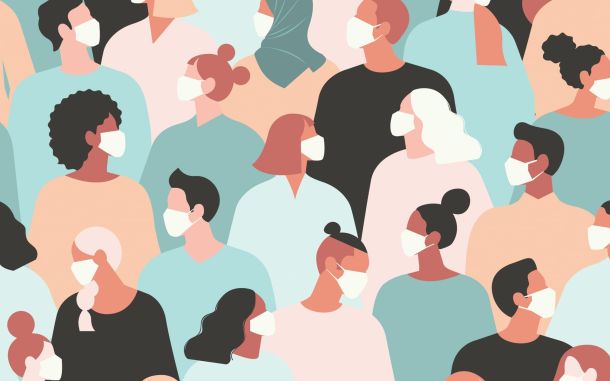Is There an Overspecialization Problem in Medicine?

In This Article
-
Is it good or bad to have so many specialties and even subspecialties in health care? Does specialization in medicine help to get better care for patients?
-
In 1940, three-quarters of America’s physicians were general practitioners. By 1960, specialists outnumbered generalists, and by 1970 only a quarter of doctors counted themselves general practitioners.
-
We cannot look at a person by separating heart, head, or nervous system from one another… The organism is a whole, and each organ is in connection with the other.
Everyone needs to go to the doctor at some point in his or her life. If there is a complicated medical situation, they are referred to a specialized doctor. Sometimes, general practitioners cannot make the right diagnoses. Many patients are lost between different physicians and their views on a specific case. It raises this question: is there an overspecialization problem in medicine? Is it good or bad to have so many specialties and even subspecialties? Does specialization in medicine help to get better care for patients? Does it help physicians to practice more effectively? Is there enough cooperation between physicians?
A medical specialty is a branch of medical practice that is focused on a defined group of patients, diseases, skills, or philosophies. Examples include children (pediatrics), cancer (oncology), laboratory medicine (pathology), or primary care (family medicine). After completing medical school, physicians or surgeons usually further their medical education in a specific specialty of medicine by completing a multiple-year residency to become a specialist. This is a very long and difficult process: it takes around 4-8 years to finish medical school depending on the school and country and then around 3-5 years to specialize in an area depending on the specialty.
Medical specialties can be classified by the following categories:
- Surgical or internal medicine: Surgical medicine generally means that diagnosis and treatment are achieved through major surgical techniques. In internal medicine, the main diagnosis and treatment is never major surgery.
- Age range of patients: The age range of patients seen by any given specialist can be quite variable (pediatrics, geriatrics, etc.).
- Diagnostic or therapeutic: While the diagnostic process is of great importance in all specialties, some specialists perform mainly or only diagnostic examinations, such as pathology, clinical neurophysiology, and radiology.
- Organ-based or technique-based: Many specialties are organ-based. Many symptoms and diseases come from a particular organ. Others are based mainly around a set of techniques, such as radiology, which was originally based around X-rays.
According to the American Board of Medical Specialties, there are 24 different specialties in medicine. Among these, many of them—such as internal medicine, pediatrics, family medicine, dermatology, etc.—have subspecialties. For example, internal medicine has 22 subspecialty areas, and pediatrics has 20 subspecialties. Even some of the doctors who have been specialized in these subspecialties have been specialized in more specific areas like an internal medicine doctor who has been specialized in cardiology and then specialized in cardiac arrhythmias.
In the past, there weren’t as many specialist doctors, but specialist-driven care has now become a fact of medical practice. In the past decade, the probability that a visit to a physician resulted in a referral to a specialist has nearly doubled, from 5% to more than 9%. Referral rates to specialists are estimated to be at least twice as high in the U.S. as in Britain.
The past half-century has witnessed great changes in American medicine. One of the biggest shifts is this rise of specialists. In 1940, three-quarters of America’s physicians were general practitioners. By 1960, specialists outnumbered generalists, and by 1970 only a quarter of doctors counted themselves general practitioners. There are a multitude of factors causing the increase in specialization, like earning potential, quality of life, and prestige.
Patients with multiple chronic diseases are not an anomaly, and the number of the patients who have more than one disease has been increasing. One of the main causes for the increasing number of patients is because we now have more effective diagnostic techniques. Recently, a group of researchers in Scotland examined the healthcare usage of 1.7 million people, nearly a third of the country. Their findings, published in the prestigious medical science journal The Lancet, suggest that 23% of Scottish people have multimorbidity, roughly the same percentage as in the United States, and that this percentage increases drastically as people age.
By age 65, the average person has two or more chronic diseases, and people living in poverty reach this mark nearly 10 years earlier. As both the percentages of the population living in poverty and over 65 years of age continue to rise, handling patients with multiple chronic ailments become more complicated and requires more specialists.
The researchers looked for differences in treatment and outcomes among Medicare patients hospitalized for heart attack, heart failure, or cardiac arrest when the American Heart Association and American College of Cardiology held their national meetings compared with identical non-meeting dates. Their retrospective data set spanned 10 years (2002 to 2011). They found "substantially" lower adjusted 30-day death rates among high-risk patients with heart failure or cardiac arrest admitted to teaching hospitals during meeting dates. For heart failure, the death rate was 17.5% during meeting times vs 24.8% during non-meeting times. For cardiac arrest, the rates were 59.1% and 69.4%, respectively. For high-risk patients admitted to teaching hospitals with acute myocardial infarction, 30-day mortality rates were similar between meeting and non-meeting dates, at 39.2% and 38.5%. Fewer PCIs (Percutaneous Coronary Intervention—formerly known as angioplasty with stent) were performed during meeting dates (20.8% vs. 28.2%), "without any detriment to survival," a finding that "suggests potential overuse of PCI in this population," the authors said in a paper released online on December 22 in JAMA Internal Medicine.
Some researchers resemble the health care system to the “pin factory” model of Adam Smith. According to this model, which Smith tells in an anecdote on the first page of his The Wealth of Nations, the division of labor is the main cause of prosperity. He asserted that ten workers could produce 48,000 pins per day if each of eighteen specialized tasks was assigned to particular workers. Average productivity would be 4,800 pins per worker per day. Without the division of labor, a worker can hardly produce even one pin per day. This example shows the increased productivity and effectiveness after specialization.On the other hand, we also need to see the whole picture especially regarding patients with multiple medical conditions. Otherwise, as in the parable of the blind men and the elephant, we can have only partial diagnosis and cannot provide patients with a wholesome healing.Fethullah Gülen, a contemporary Islamic intellectual, said that the profession of medicine is very important, and it is one of the best and most direct ways to help people and earn God’s pleasure. He also points out the problem of being lost in medical specialization: “We cannot look at a person by separating heart, head, or nervous system from one another… The organism is a whole, and each organ is in connection with the other. Then we need to take a wholistic look – a heart doctor should know the other parts of the body as well as the heart so that she/he can reach more accurate conclusions.”
Information in the medical arena is growing very fast, and technology is rapidly changing. As the technology develops, new techniques are being introduced in thousands of medical publications. It is impossible for doctors to keep up with all of these developments. But they are in a position to evaluate the standards of practice, review advances in technology and science—and changes in regulation and delivery systems—and adapt themselves accordingly. Physicians have to be supported throughout their careers with innovative programs that help early-career physicians further research, connect physicians with emerging scientific studies, and practice relevant continuing medical education, as well as recognizing the work physicians are doing to improve health care safety and quality.
In conclusion, specialization in medicine is very important, but this specialization should not turn into a form of alienation from other departments, and doctors should not miss the general points. They must work in coordination with other doctors through extensive consultation.
References
- Cambridge University Press. (2009). Cambridge academic content dictionary, 2
- https://www.econlib.org/library/topics/highschool/divisionoflaborspecialization.html
- https://en.wikipedia.org/wiki/Medical_specialty
- https://www.abms.org/wp-content/uploads/2020/11/ABMS-Guide-to-Medical-Specialties-2020.pdf
- 2018 May; 10(5): e2720. https://www.ncbi.nlm.nih.gov/pmc/articles/PMC6067811/
- https://www.theatlantic.com/health/archive/2012/07/our-unsustainable-culture-of-medical-specialization/260504/
- https://www.herkul.org/kirik-testi/husn-u-zan-ve-rahmete-iltica/








